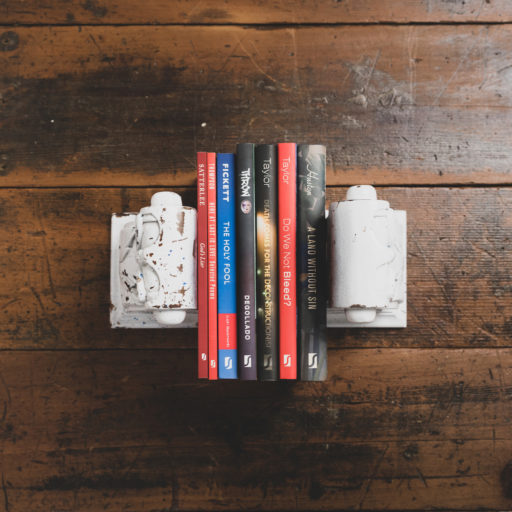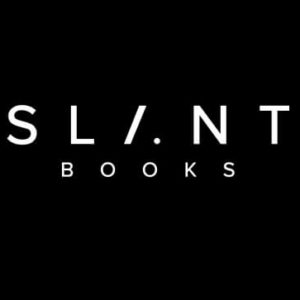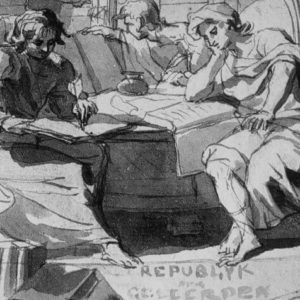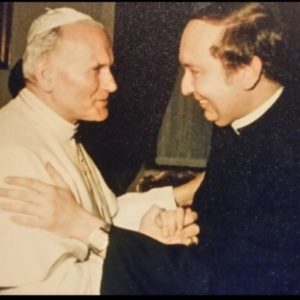The theologian Hans Urs von Balthasar entitled one of his books Truth is Symphonic. His argument is that the created order is by nature plural and diverse, but it reaches its full meaning only when all the different instruments sound together.
That’s a lovely thought, but let’s be honest: when we listen to the world what we hear most often is cacophony, not harmony. Different groups and interests want their song to dominate—they want unison, not polyphony.
To be sure, many of these groups have legitimate, even compelling grievances: their voices have been drowned out by others and deserve the chance to be heard. And yet in the current climate they often become tyrannical in their own right, demonizing those they would replace.
Such are the culture wars of our time.
It’s hard not to believe that cacophony will prevail. It takes courage and hope to trust that in all our differences we can work toward a “sounding together.”
A book publisher may at first glance seem like just another source of noise: it produces a stream of wildly different titles, many with seemingly no relationship to each other. But it is possible that when enough notes are heard, they may achieve a larger harmonic pattern, the way the choir’s clear tones enable you to tune your voice to theirs.
The name that has traditionally been given to the cultural impulse to find connectedness and peace is “Humanism.” Its motto could be taken from the Latin poet Terence, who said “Homo sum: humani nihil a me alienum puto”: “I am human, I consider nothing human alien to me”—words that take on added meaning when you realize they were spoken by a former slave.
Humanism begins with a love of language and the myriad ways artfully crafted words can attune us to the possibilities of harmony. At the origin of the humanistic impulse is a high regard for something we no longer admire: the art of rhetoric. To contemporary ears, rhetoric only connotes language that is manipulative and false, but it was not always so.
For nearly two millennia, rhetoric meant something nobler: language used to connect speaker and audience, the occasion and the human needs that occasion calls forth, the competing claims of warring factions, problems and solutions. Rhetoric was once thought to be about building bridges across chasms that seem impassable, seeking unity and, yes, a modicum of peace.
Throughout history, humanists have valued rhetoric and language (and art in general) because these forms of discourse attempt to move beyond the sort of definitional language that divides people. Thus they have found that art provides us with a repository of shared human experience that enables communication across differences.
Because literature is concrete and experiential, grounded in intuition rather than a dry rationalism, it can help prevent us from falling prey to abstractions that over-simplify and reduce the world’s diversity and fragility (or, in essence, promoting the belief that only one voice is true).
Literature, as a re-creation of life, requires that we engage in a constant round of interpretation and revaluation of our preconceptions—our prides and prejudices. Literature thrives on ambiguity, the uncertainty about what is true or false, better or worse, real or unreal.
But ambiguity isn’t merely a word for hopeless ignorance. Rather, ambiguity teaches humility: things are not always what they seem—or what we want them to be—so we must be prepared to admit we were wrong and begin to change.
Ambiguity also enables us to see that there is more than meets the eye, that what we are tempted to reduce to the literal is actually radiant with many levels of meaning. In art as in religious faith we encounter layers within layers: we encounter mysteries that are opaque but allow us entry to their outskirts. In time, wisdom teaches us that this is enough. We can take away meaning without believing we fully possess it.
The poet John Keats called this “negative capability”: the capacity for “being in uncertainties, mysteries, doubts, without any irritable reaching after fact and reason.”
In fact, the roots of the Western tradition go deep into the soil of myth and sacred narrative, of stories about the ambiguity of a world where power and privilege seem to rule everything, whereas in truth it is often the smallest, the youngest, and the least who have within themselves the wisdom and grace needed to show us what true human flourishing looks like.
The archetypal Western story is of a movement from the margin to the center: the oddball philosopher who knows only that he does not know is wiser than the rulers of his city; the stone that was neglected becomes the cornerstone.
This existential humility and topsy-turvy view of the world—derived from both Jerusalem and Athens, theology and philosophy—has fueled reform through history; it offers a way to deconstruct power and press for greater inclusiveness.
To be sure, these reform movements have grown up alongside entrenched interests that have cynically used the same canon—the same scriptures, traditions, and institutions—to uphold injustice and oppression.
But as the medievals liked to say: the abuse of a thing does not negate its proper use.
The current iteration of the culture wars threatens to sweep aside the humanism that has long been a source of constructive change. We are witnessing the rise of a toxic moralism that is given to sweeping, monolithic statements, instant judgments, the reduction of all human experience to identity politics, and to enforcing a party line in the name of virtue.
In such an environment, literature and the arts are pressed into service as propaganda. Why struggle to produce exquisitely crafted literature that makes demands of readers when so many options exist for the sorts of thinly veiled allegories that offer the comfort of reinforcing your prejudices? Increasingly, we read for self-congratulation.
Humanists strive for peace, so the response that Slant seeks to give will not come in the form of counter-arguments and polemics, but in the continued presentation of works that extend the tradition—works that seek harmony amidst the cacophony, even if that requires wrestling with irony, tragedy, and the ambiguity that haunt both our intentions and our actions.
With Zadie Smith we believe that the way to approach difficult, intractable problems is not to demonize and withdraw into a fortress of self-righteousness but to face hard truths, “to go deeper in, and out the other side.”
Another key value for Slant is excellence in literary craft, both in the quality of writing and the production values of the books we publish. One of the greatest virtues of mastering any discipline is that the process teaches us not to take short cuts, not to settle for easy answers, not to short circuit the act of discovery that is at the heart of all great works of the imagination.
Our hope is that readers will ultimately find themselves desiring more than just their own tribal group chanting in unison, that they will want to hear counter-point and harmony, the voices of the other that have been getting lost in the noise of contemporary culture.
As for Slant, we are busy tuning up for the symphony.
On second thought, maybe an even better analogy would be something like those sing-along concerts of Handel’s Messiah, a grand duet. Writers and readers, sounding together….
Gregory Wolfe is the publisher and editor of Slant Books. In 1989 he founded Image—one of America’s leading literary journals. He was also the founding director of the Seattle Pacific University MFA in Creative Writing program. His books include Beauty Will Save the World, Intruding Upon the Timeless, and The Operation of Grace. He is married to the novelist, Suzanne M. Wolfe.





